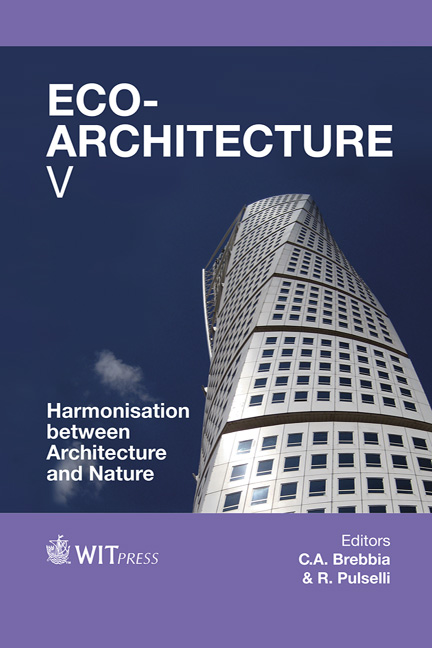Zero-Energy-Urban-Quarter: Experiences And Results From A University Teaching Course
Price
Free (open access)
Transaction
Volume
142
Pages
12
Page Range
565 - 576
Published
2014
Paper DOI
10.2495/ARC140481
Copyright
WIT Press
Author(s)
U. Dietrich
Abstract
In an architecture master course (MA), students were invited to investigate whether a feasible Zero-Energy-Urban-Quarter can be achieved and under which set of design rules. The requirements of the task were to design living quarters for 6500 inhabitants with a density of 100 inhabitants per hectare. Each group of students had to select a plot of land located in any of the big German cities. Throughout the semester, a sequence of 4 presentations took place, where the topic was investigated and observed. The presentations commenced with the analysis of the urban situation and a first proposal of the building arrangements, main transport axes, primary (private) central facilities, secondary (groups such as housing communities), as well as public areas. After justifying the selection of a representative type building, it had to be further detailed and investigated as a passive house. This dealt with aspects, such as construction, materials, U-values, thermal bridges, air tightness, as well as floor plans and the installation of a mechanical ventilation system. Detailed energy calculations were made using the well-introduced PHPP (Passivhaus-Projektierungs-Paket) tool. After the final optimization of the prototype building, the investigation turned its focus back on aspects of urban planning. The final arrangement of the building, definition of areas for solar technology systems and secondary territories as well as a description of possible alternatives, completed the design process. The results of this investigation concluded that it is possible to design Zero- Energy-Urban-Quarters in Germany, with a maximum density of 100 inhabitants per hectare. Both targets of 15 kWh/m2a for heating, and 45 kWh/m2a for primary energy, can be achieved without difficulty. For the German specification of the 2020 standard, a primary energy of 40 kWh/m2a is recommended without the utilization of solar systems (i.e. collectors for hot water and PV) and 25 kWh/m2a when utilizing solar systems.
Keywords
Zero-Energy-Urban-Quarter, moderate climate, design rules, urban density, teaching methods





